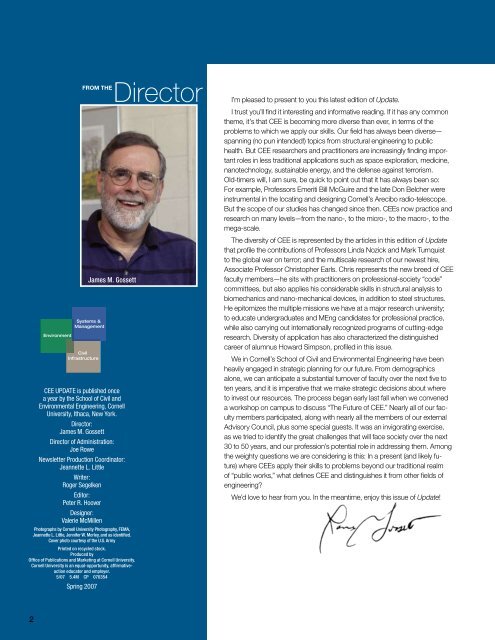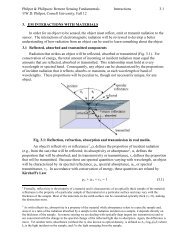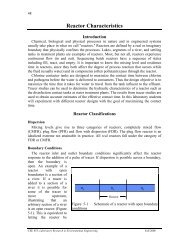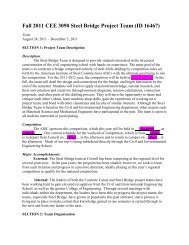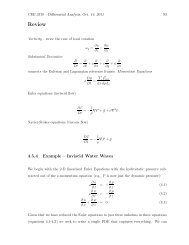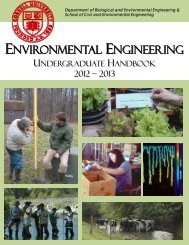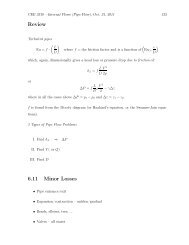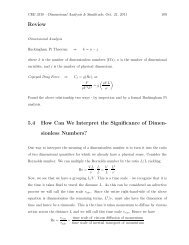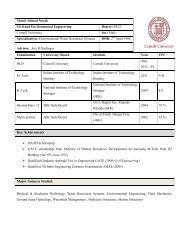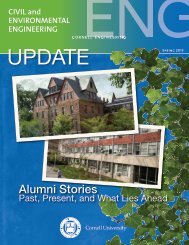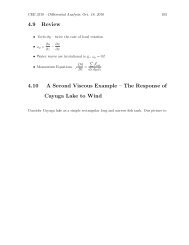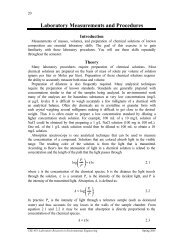Spring 2007 - Civil & Environmental Engineering - Cornell University
Spring 2007 - Civil & Environmental Engineering - Cornell University
Spring 2007 - Civil & Environmental Engineering - Cornell University
Create successful ePaper yourself
Turn your PDF publications into a flip-book with our unique Google optimized e-Paper software.
From the<br />
Director<br />
CEE UPDATE is published once<br />
a year by the School of <strong>Civil</strong> and<br />
<strong>Environmental</strong> <strong>Engineering</strong>, <strong>Cornell</strong><br />
<strong>University</strong>, Ithaca, New York.<br />
Director:<br />
James M. Gossett<br />
Director of Administration:<br />
Joe Rowe<br />
Newsletter Production Coordinator:<br />
Jeannette L. Little<br />
Writer:<br />
Roger Segelken<br />
Editor:<br />
Peter R. Hoover<br />
Designer:<br />
Valerie McMillen<br />
Photographs by <strong>Cornell</strong> <strong>University</strong> Photography, FEMA,<br />
Jeannette L. Little, Jennifer W. Morley, and as identified.<br />
Cover photo courtesy of the U.S. Army<br />
Printed on recycled stock.<br />
Produced by<br />
Office of Publications and Marketing at <strong>Cornell</strong> <strong>University</strong>.<br />
<strong>Cornell</strong> <strong>University</strong> is an equal-opportunity, affirmativeaction<br />
educator and employer.<br />
5/07 5.4M CP 070354<br />
<strong>Spring</strong> <strong>2007</strong><br />
James M. Gossett<br />
I’m pleased to present to you this latest edition of Update.<br />
I trust you’ll find it interesting and informative reading. If it has any common<br />
theme, it’s that CEE is becoming more diverse than ever, in terms of the<br />
problems to which we apply our skills. Our field has always been diverse—<br />
spanning (no pun intended!) topics from structural engineering to public<br />
health. But CEE researchers and practitioners are increasingly finding important<br />
roles in less traditional applications such as space exploration, medicine,<br />
nanotechnology, sustainable energy, and the defense against terrorism.<br />
Old-timers will, I am sure, be quick to point out that it has always been so:<br />
For example, Professors Emeriti Bill McGuire and the late Don Belcher were<br />
instrumental in the locating and designing <strong>Cornell</strong>’s Arecibo radio-telescope.<br />
But the scope of our studies has changed since then. CEEs now practice and<br />
research on many levels—from the nano-, to the micro-, to the macro-, to the<br />
mega-scale.<br />
The diversity of CEE is represented by the articles in this edition of Update<br />
that profile the contributions of Professors Linda Nozick and Mark Turnquist<br />
to the global war on terror; and the multiscale research of our newest hire,<br />
Associate Professor Christopher Earls. Chris represents the new breed of CEE<br />
faculty members—he sits with practitioners on professional-society “code”<br />
committees, but also applies his considerable skills in structural analysis to<br />
biomechanics and nano-mechanical devices, in addition to steel structures.<br />
He epitomizes the multiple missions we have at a major research university;<br />
to educate undergraduates and MEng candidates for professional practice,<br />
while also carrying out internationally recognized programs of cutting-edge<br />
research. Diversity of application has also characterized the distinguished<br />
career of alumnus Howard Simpson, profiled in this issue.<br />
We in <strong>Cornell</strong>’s School of <strong>Civil</strong> and <strong>Environmental</strong> <strong>Engineering</strong> have been<br />
heavily engaged in strategic planning for our future. From demographics<br />
alone, we can anticipate a substantial turnover of faculty over the next five to<br />
ten years, and it is imperative that we make strategic decisions about where<br />
to invest our resources. The process began early last fall when we convened<br />
a workshop on campus to discuss “The Future of CEE.” Nearly all of our faculty<br />
members participated, along with nearly all the members of our external<br />
Advisory Council, plus some special guests. It was an invigorating exercise,<br />
as we tried to identify the great challenges that will face society over the next<br />
30 to 50 years, and our profession’s potential role in addressing them. Among<br />
the weighty questions we are considering is this: In a present (and likely future)<br />
where CEEs apply their skills to problems beyond our traditional realm<br />
of “public works,” what defines CEE and distinguishes it from other fields of<br />
engineering?<br />
We’d love to hear from you. In the meantime, enjoy this issue of Update!


